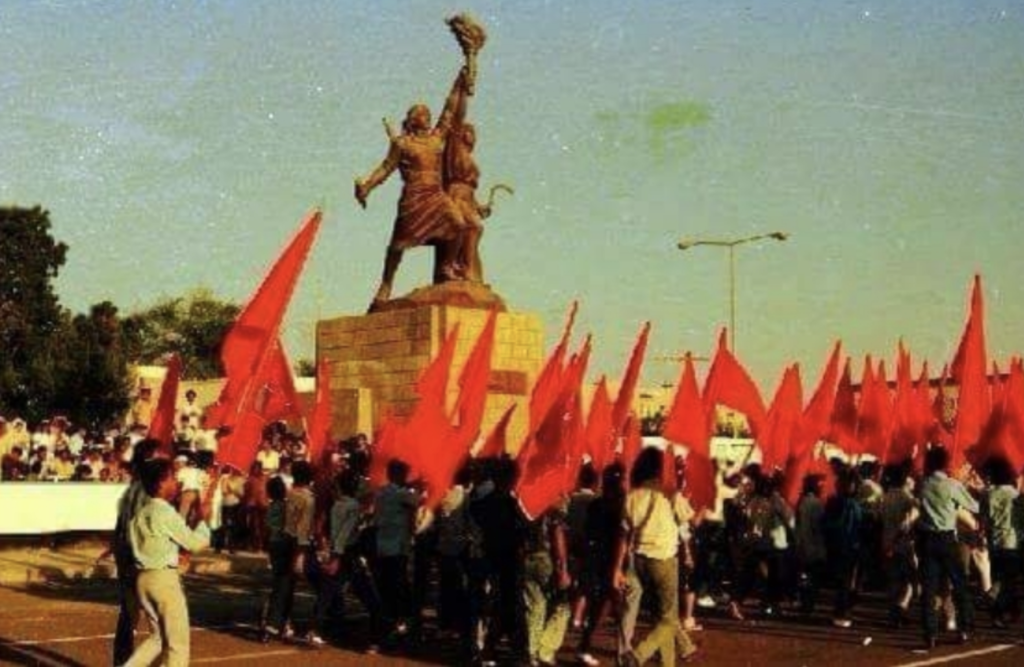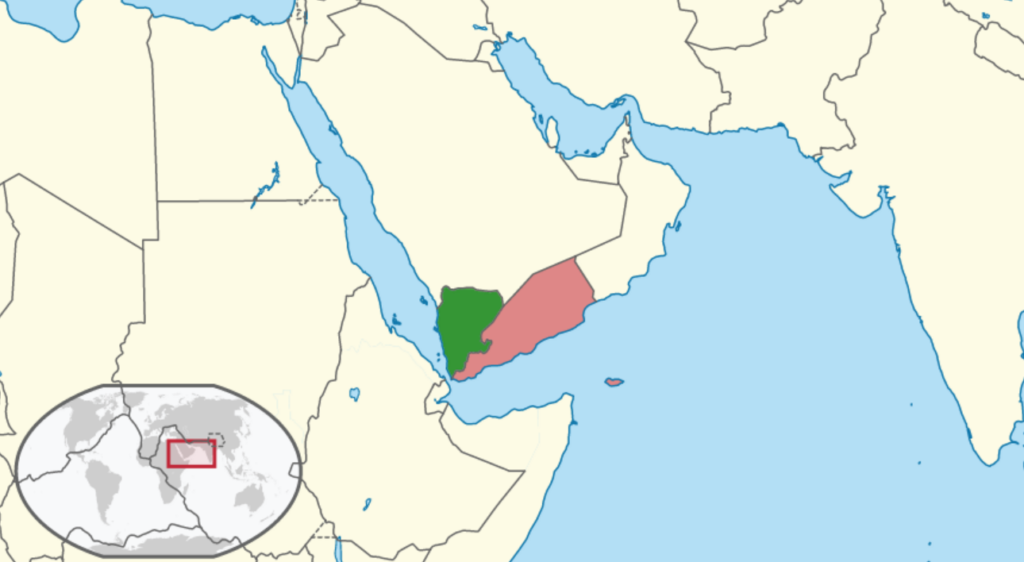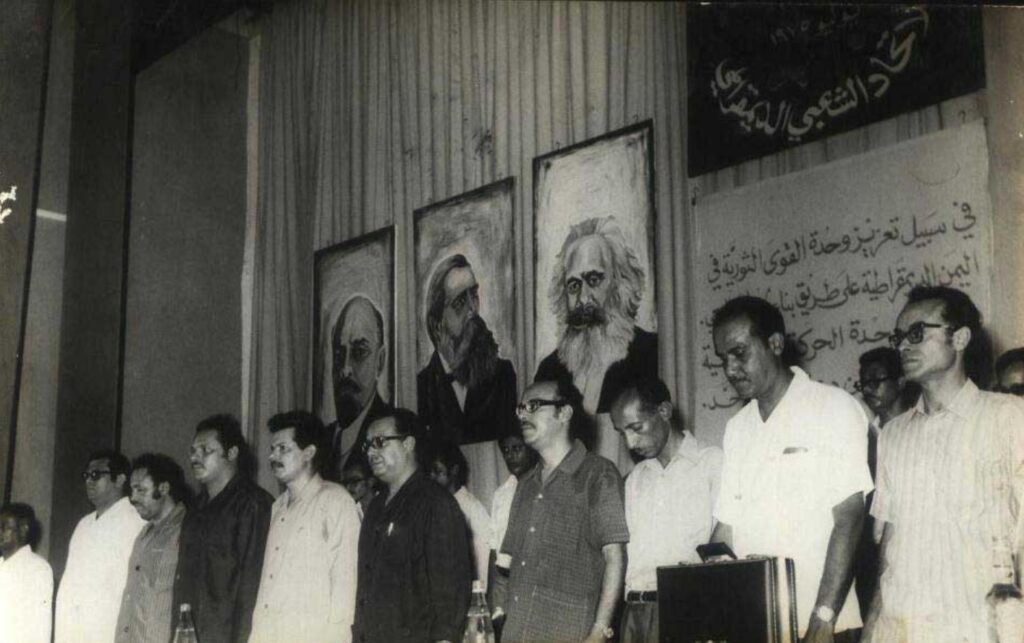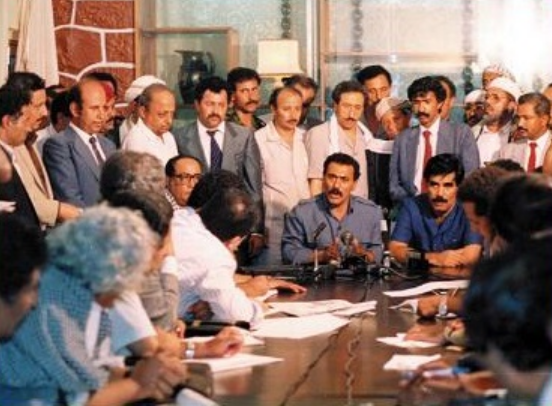South Yemen: Divisions before the Yemeni Civil War

By: Liam Nagle / Arab America Contributing Writer
When one thinks about a divided Yemen, one might think about its ongoing, devastating, and complicated civil war. However, this wasn’t the first time Yemen was divided, as Yemen didn’t always exist as a single entity. Before 1990, it was two separate and distinct states—one based in the north and west and the other in the south and east. The main reason for this division comes from their colonial history; while southern Yemen was controlled by the British Empire, northern Yemen was instead controlled by the Ottoman Empire. Today, we will go into the history of South Yemen under the People’s Democratic Republic of Yemen.
Road to Independence

Before its independence, Southern Yemen was under the British Empire’s control since 1839. It would remain this way for around a century; even with northern Yemen’s independence following the collapse of the Ottoman Empire, southern Yemen remained in British control. However, things began turning against the British in the 1950s with the rise in Arab nationalism and anti-colonialism. To prevent rebellion, the British relinquished direct control over southern Yemen, instead creating the new Federation of the Emirates of South Arabia (which later became the Federation of South Arabia) to preserve their influence. But the federation would be short-lived.
Firstly, many of the smaller sheikhdoms under British protection didn’t join this federation. Secondly, the rise of Arab nationalism resulted in the creation of several resistance movements, particularly the National Liberation Front (NLF) and the Front for the Liberation of Occupied South Yemen (FLOSY). The NLF was a Marxist-Leninist communist organization and enjoyed popularity in the rural areas of Yemen. In contrast, the FLOSY was a pro-Nasser and Egypt-supported movement that was popular in urban centers.
Despite both being anti-British and anti-colonial resistance movements, the NLF and the FLOSY would not get along. The two sides have been described as fighting each other more than the British. However, in this, the NLF emerged more successful, securing many pro-British western protectorates by 1965. Britain was forced to come to the negotiating table with the NLF, where it pledged to withdraw from southern Yemen and allow the NLF to take control of the entire territory. Britain would finally do so in November of 1967. With the communist NLF now in control of the entirety of southern Yemen, the FLOSY were sidelined. Many either joined the new NLF-dominated government or fled northwards into North Yemen.
The People’s Democratic Republic of Yemen

The National Liberation Front proclaimed the establishment of the People’s Republic of Yemen on November 30th, 1967, after the last British soldier left Aden. Although the NLF was a communist organization, it was defined by two different factions: the rightists, who didn’t want to enact large-scale reforms like nationalization, and the leftists, who were much more Marxist in their orientation. Although the rightists held power briefly after independence, the leftist faction seized power in 1970 during what has been coined as the “Corrective Move”.
After taking power, the leftist faction began instituting Marxist-Leninist reforms. This included the establishment of a centrally planned economy and the creation of a one-party state under the Yemeni Socialist Party. There were also a series of reforms specific to the Yemeni context—for example, women became legally equal to men, child marriage and polygamy were outlawed, and the practice of slavery was made illegal. South Yemen also received a great deal of support from other communist countries. The Soviet Union became one of its most significant backers, alongside its allies in Eastern Europe as well as the Chinese.
South Yemen wasn’t without its internal turmoil, however. For instance, a civil war broke out in South Yemen in 1986. Two different factions emerged within South Yemen, one led by General Secretary Abdul Fattah Ismail and the other led by Prime Minister Ali Nasir Muhammad. This rivalry emerged due to Ismail’s insistence on spreading Marxist revolutions abroad, resulting in a significant backlash against him internally and externally, with the Soviet Union backing Ali Nasir. In January of 1986, Prime Minister Ali Nasir’s bodyguards opened fire on the Yemeni Socialist Party’s politburo while his supporters were not present, resulting in the deaths of Ismail and several of his associates. Despite this, the majority of the army backed Ismail, resulting in a civil war between Ismail’s and Ali Nasir’s supporters. The war would last only a few weeks but would be devastating; much of the political cadre of the country would be among the thousands killed. Ali Nasir and his supporters fled north into Northern Yemen, and Ismail’s supporters were victorious.
Unification

The civil war had severely weakened the People’s Democratic Republic. With Ismail and many of his supporters dead, one of the only pro-Ismail political figures who was still alive was Ali Salem al-Baidh. Having become General Secretary following Ismail’s death, he inherited an increasingly dangerous position. The Soviet Union—Yeni’s primary backer—began ceasing its aid to the country through the late 1980s. And with much of the political cadre having been killed, South Yemen deemed that it was necessary to begin unification talks with North Yemen.
The two states had a cordial but unstable relationship previously. Two Yemenite Wars in 1972 and 1979 made relations uneasy, but both sides reiterated their commitments toward a peaceful unification. While the Soviet Union embraced domestic political and economic reforms in the 1980s, South Yemen made similar moves. At the same time, they negotiated with North Yemen about joint oil exploration, unrestricted border passage, and general demilitarization of the border. Finally, the two countries would unite just a few years later, forming the new Republic of Yemen in 1990. A brief civil war would break out in 1994 by anti-unification South Yemeni secessionists, but their campaign would ultimately fail in the same year, showing that the Republic was to remain, at least for now.
Conclusion
Even before its ongoing civil war, Yemen was divided. While the Ottomans ruled northern Yemen, the British ruled the south. Having achieved independence later than its northern half, South Yemen also embraced a Marxist-Leninist system, becoming the only country in the Middle East to do so. However, internal disputes over leadership resulted in multiple conflicts, with the most disastrous coming in 1986. Nevertheless, the country would persevere into the 1990s by unifying with North Yemen. The ongoing civil war goes to show that separatist sentiments in South Yemen do remain in the form of the Southern Transitional Council. However, only time will tell whether or not this may come to fruition.
Check out our Blog here!








